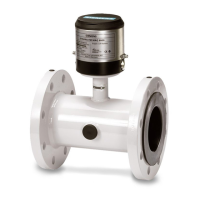
Do you have a question about the Siemens SITRANS F MAG 8000 Standard and is the answer not in the manual?
| Brand | Siemens |
|---|---|
| Model | SITRANS F MAG 8000 Standard |
| Category | Measuring Instruments |
| Language | English |
Lists the components included in the SITRANS F M MAG 8000 package.
Outlines the evolution and important changes in the documentation over editions.
Provides details on obtaining additional product information online and worldwide contacts.
Provides general safety guidelines for installation and operation, emphasizing qualified personnel.
Covers general installation requirements and instrument safety standards.
Lists European directives (EMC, LVD, ATEX, PED, MID) the device conforms to.
Details potential hazards of lithium batteries and necessary precautions for safe handling.
States the device is not approved for use in hazardous areas.
Describes the main parts of the SITRANS F M MAG 8000 system and available communication modules.
Explains how the MAG 8000 microprocessor-based water meter functions and delivers data.
Details the design of the MAG 8000 as a battery-supplied magnetic inductive water meter.
Highlights key advantages of the MAG 8000, such as simple placement, low pressure loss, and zero maintenance.
Introduces the chapter on installing the water meter in both compact and remote versions.
Details the three steps for sensor installation: locating, orienting, and mounting.
Explains liquid potential equalization or grounding methods using electrodes and rings.
Describes grounding requirements for the sensor body to protect against electrical noise.
Advises special attention for meter installation in cathodic-protected pipes.
Provides instructions for potting the transmitter for IP68/NEMA 6P enclosure rating.
Details how to mount the transmitter on a wall or pipe.
Shows the internal connection diagram for the MAG 8000 device.
Outlines essential safety regulations for electrical installation and mains supply.
Covers remote sensor and transmitter installation and connection procedures.
Describes connection diagrams and procedures for 115/230 V AC and 12/24 V AC/DC power supplies.
Explains pulse output connection diagrams and configuration options.
Details connection diagrams for RS 232 and RS 485 communication modules.
Guides on connecting various add-on communication modules.
Introduces SIMATIC PDM for monitoring process values and device status.
Describes the process of installing the PDM device driver and configuring the device.
Explains how to set up the meter for communication with a PC using SIMATIC PDM.
Details how to set basic parameters, enter passwords, and manage data.
Guides on changing the device's totalizer and flow rate units.
Explains how to configure pulse outputs for volume, alarm, or call-up.
Describes methods for protecting meter parameters using hardware keys.
Explains how to operate the meter using its single key and symbolic display.
Describes the meaning of various status bar symbols on the meter's display.
Details default display settings and the menus accessible via the operator interface.
Explains the structure and functions of the operator menu with various indexes.
Discusses meter status parameters and their indication of data reliability.
Covers battery status, operation time calculation, and battery management.
Outlines maintenance requirements and inspection checks for the device.
Provides guidelines for detecting and solving common meter problems and interpreting alarms.
Details the procedures and options for replacing the transmitter or PCB board.
Step-by-step instructions for replacing the battery pack and maintaining IP rating.
Explains the power-up procedure after battery replacement, including resets and setup.
Describes how to activate and use verification mode for meter accuracy checks.
Covers user and verification sealing requirements for the MAG 8000 CT.
Provides contact information for technical assistance via internet and phone.
Outlines the required forms and procedures for returning products for service.
Gives instructions for the proper disposal of used batteries according to EU directives.
Lists and explains various fault codes, their causes, and remedies.
Details built-in functions like empty pipe detection, insulation test, and coil-current test.
Explains how to use the built-in flow simulator for verification and adjustment.
Provides technical specifications for the MAG 8000 water meter, including accuracy, media, and approvals.
Lists technical specifications for the sensor, including size, pressure range, and excitation frequency.
Details technical specifications for the transmitter, including installation, material, and display.
Covers technical details for power supply options, including battery and mains configurations.
Provides specifications for the Modbus RTU add-on module.
Explains how the MAG 8000 and MAG 8000 CT outputs function as pulse volume or alarm.
Discusses meter calibration and uncertainty, referencing ISO 17025 standards.
Details FM Fire Service approval for automatic fire protection systems.
Outlines type approval according to OIML R49 for the MAG 8000 CT program.
Covers MI-001 water meter directive approval for the MAG 8000 CT.
Shows how temperature affects pressure specifications for different flange types.
Provides dimensional drawings and tables for various MAG 8000 models and flange types.
Introduces the Flow Tool software, prerequisites, and how to obtain it.
Guides on starting the commissioning process using Flow Tool software.
Explains how to set up the meter for PC communication using Flow Tool.
Details setting basic parameters, password protection, and data management in Flow Tool.
Describes how to change unit settings and lists protected parameters.
Guides on configuring output settings for pulse, alarm, or call-up functions in Flow Tool.
Explains default display settings and accessible menus within the Flow Tool interface.
Covers meter status and data logger functions within the Flow Tool software.
Shows how to view and manage battery configuration parameters using Flow Tool.
Outlines the steps for generating a MAG 8000 qualification certificate using PDM.
Explains how to enable the insulation test required for certificate generation.
Guides on uploading device data to the PC for certificate generation.
Details the process of generating the qualification certificate via PDM.
Explains how service technicians evaluate the certificate results against reference values.
Provides a table for converting various volume and flow rate units.
Lists and describes various device parameters, their factory settings, and data ranges.
Shows a table relating flow velocity, quantity, and sensor dimension.
Instructs on how to find certificates online or on the included DVD.
Provides information on ordering spare parts and accessories.
Guides on how to find the latest ordering data for spare parts online.
Compares features between MAG 8000 basic and advanced versions.
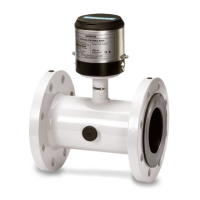

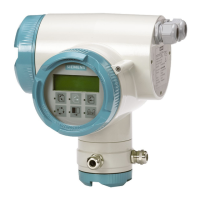
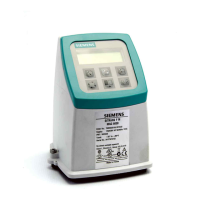

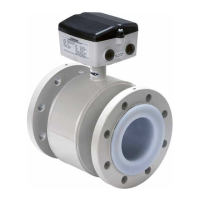

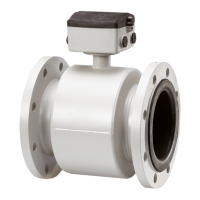


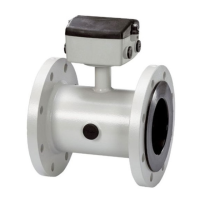
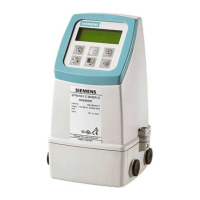
